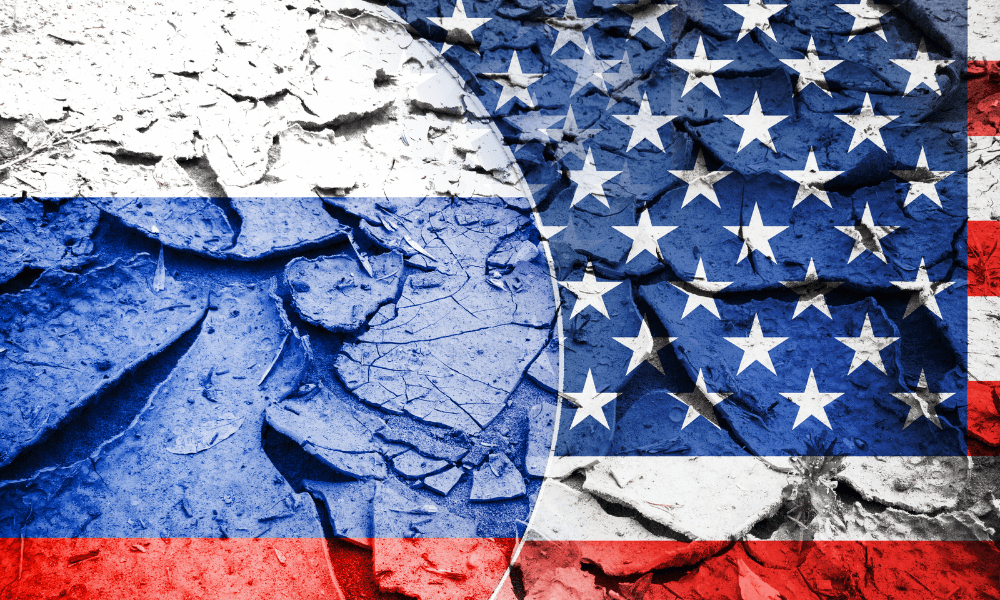
The possibility of steeper interest rate hikes worried investors, and tensions between Ukraine and Russia escalated on Friday. This was sending markets into a state of flux with the usual risk assets and FX responding in kind; More on that below.
Meanwhile, there was news that a Russian attack on Ukraine could begin any day now and would likely start with an air assault, a White House national security adviser Jake Sullivan said on Friday. However, while the US says Russia has all the forces in place to launch military action, Russia has repeatedly said it has no such plans.
The BBC reports that ''Russia is adamant it has no plans to attack Ukraine: and foreign intelligence chief Sergei Naryshkin has condemned 'dangerous lies' being spread by the US and in Western capitals.''
Ukrainian President Volodymyr Zelensky said warnings of Russian aggression were stoking “panic” after the US national security advisor warned of an imminent Russian invasion.
''Ukraine is less convinced of the risk and its president has appealed to the West not to spread 'panic','' the BBC also wrote. On the other hand, President Vladimir Putin has threatened "appropriate retaliatory military-technical measures" if what he calls the West's aggressive approach continues which could jeopardise Europe's entire security structure, in the least, so markets are paying close attention to weekend developments.
Putin told his French counterpart Emmanuel Macron Saturday that accusations Moscow plans to attack Ukraine were "provocative speculation" and could lead to a conflict in the ex-Soviet country.
"Conditions are being created for possible aggressive actions of the Ukrainian security forces in the Donbass," the Kremlin added. Meanwhile, the US State Department is drawing down most of its staff at the US embassy in Kyiv because Russia has a “very capable” military and the US has to prepare for the worst scenario, according to a senior US official.
“Prudence requires us to assume, to plan for and prepare for a worst-case scenario. And the worst-case scenario would obviously involve substantial Russian attacks on the Ukrainian capital,” the official told reporters during a phone call on Saturday morning.
US Secretary of Defense Lloyd Austin spoke with his Russian counterpart Sergey Shoyguon on Saturday and they discussed Russia's troop buildup in Crimea and around Ukraine, the Pentagon said. US President Joe Biden and Russia's Vladimir Putin also spoke by phone for an hour on Saturday and was completed at 12:06 p.m. ET, according to a White House official. Markets are now waiting for news of what was discussed after US equity benchmarks ended the week lower, with US stocks declining for a second consecutive session on Friday.
The S&P 500 ended lower by 1.9% to 4,418.64 and fell 1.8% for the week. The Nasdaq Composite lost 2.8% to 13,791.15 and declined 2.2% for the week and the Dow Jones Industrial Average pulled back by 1.4% to 34,738.06, ending the week 1% lower.
West Texas Intermediate crude oil surged by 4.5% to $93.93 a barrel and the global benchmark Brent crude was also advancing by 4.1% to $95.15 per barrel. This is a dangerous scenario for global markets considering the onset of uber-high inflation readings of late and the proposed aggressive resolve from global central banks. The blockbuster US Consumer Price Index report had already increased odds for a 50bp hike from the Federal reserve and talks of an emergency interest rate meeting and action before March's Federal Open Market Committee convenes to decide on the best course of action. However, energy prices would be tactically vulnerable to de-escalation in Russian-Ukrainian tensions.
Meanwhile, gold jumped on to a near two-month peak as concerns over surging inflation and the drums of conflict lifted demand for the safe-haven metal. Spot gold ended 1.77% higher to $1,858.98 per ounce and hit its highest level since Nov 2021. US gold futures settled up 0.3% at $1,842.1. Gold is considered a hedge against soaring inflation and is often used as a safe store of value during times of political and financial uncertainty.
However, analysts at TD Securities argued that ''without sustained buying flow, gold prices are likely to succumb to the substantially higher real rates amid a hawkish regime at the Fed.''